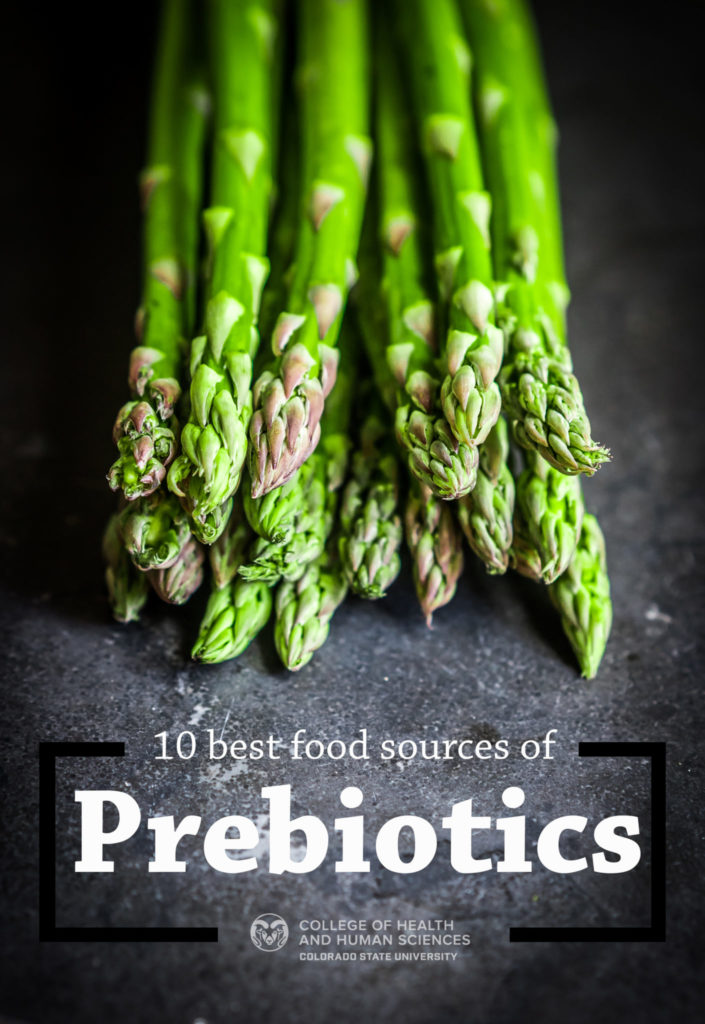Prebiotics from whole foods (listed below) will provide the greatest benefit (vs. supplement form) since they contain additional health-promoting nutrients like vitamins, minerals and antioxidants.
The International Scientific Association of Probiotics and Prebiotics recommends getting at least 5 grams of prebiotics per day. This is equal to approximately 2 tablespoons of chicory root, 3/4
cup of Jerusalem artichoke, 3 garlic cloves or 1/4 pound of asparagus.
Not all prebiotics are treated equal in every person’s body. Some people have a harder time tolerating some prebiotics. As with dietary fibers, some gas or bloating can result from too much prebiotics. Start with small amounts and allow your gut to adapt. If unfavorable symptoms persist, it’s important to limit or avoid the food that is suspected to be causing the symptoms.
10 food sources
Listed in order from greatest to least percent of probiotic fiber by weight.
- Chicory Root: Popular for its coffee flavor, chicory root is 65% fiber by weight, making it one of the best prebiotic food sources around. It is often added to cereal, breakfast bars,
dairy products and bread. You can find chicory root granules to add to coffee or recipes. - Jerusalem Artichoke: This plant looks like ginger root but mimics the flavor of an artichoke heart. Add it to soup or salad. It can also be boiled, sautéed or roasted to resemble the consistency of a creamy potato.
- Dandelion Greens: This is the same plant you’d find in your backyard, but opt for fresh greens from the grocery store to ensure food safety and quality. Add them to your salads, sandwiches, stews, casseroles, soups or herbal teas. Blanching them in boiling water for about 20 seconds can reduce their bitter taste.
- Raw Garlic: Raw garlic can be used to flavor guacamole, hummus and salad dressings and sprinkled on stir fry, curry, Mexican or Italian dishes.
- Leeks: A sweeter version of the onion, leeks can be tossed into pasta and soups, or added to a garden salad, or sautéed and added to frittata or quiche.
- Onions: Raw onions can be added to sandwiches, salads, or dips (salsa!). Onions can also be caramelized, grilled or sautéed to flavor any savory dish.
- Asparagus: Lightly steam with garlic and lemon, add to soups and salads, or wrap in foil to create a steam tent and throw on the grill.
- Wheat Bran: Add wheat bran to cereal, oatmeal, yogurt or blend in smoothies. When baking, substitute up to 1/3 cup baking flour with wheat bran.
- Banana: You can make a banana split “parfait” with a banana sliced length-wise and topped with low-fat yogurt, granola, berries, peanut butter and a dash of cinnamon.
- Other sources of prebiotics: Soybeans, whole grains (e.g. barley, rolled oats) and whole wheat foods.
For delicious recipes, nutrition tips, and to find cooking and nutrition classes, go to the Kendall Reagan Nutrition Center website. More great info is also available at the College of Health and Human Sciences Pinterest board.